The Mourning Dove (Zenaida macroura) is a pale brown and gray dove species with a pointed tail, dark spot on its face, and black spots in its wings.
A pleasant brown dove with a pointed tail seen at a feeder, park, backyard, or other open habitats is probably this species. They love to visit feeders, are often seen in many urban zones, and can be on their own or in fair-sized flocks.
Did you ever wonder how this bird got its name? Or what’s the behavior of Mourning Dove? See why and learn more about this peaceful backyard bird in this article!
On this page
Identification
Male
Male Mourning Doves are brown and gray birds with a blue-gray cap on their small head, have narrow gray eyerings, and a small black spot on the lower part of their face.
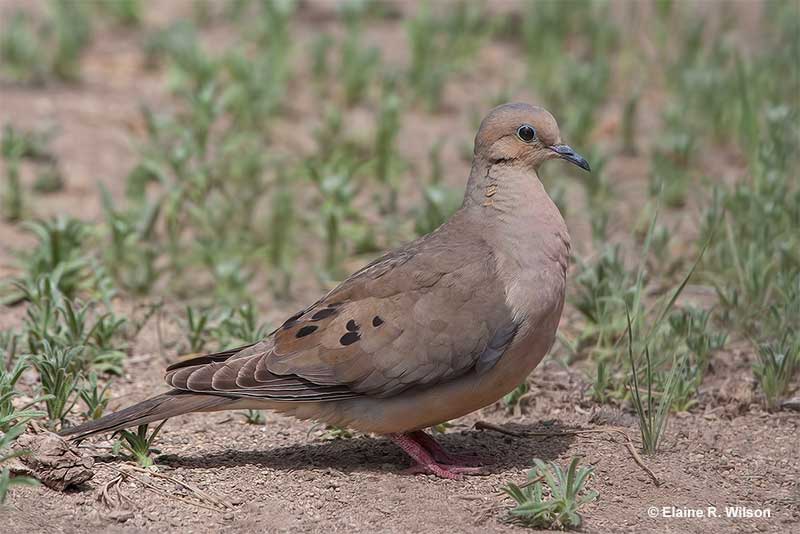
This is the Male Mourning Dove. If you take a closer look, the gold spots and pinkish hue are visible.
These birds have white on the outer feathers of their long pointed tail, short pink legs and feet, and some black spotting on their wings. Males also have some gold and pink iridescence on the side of their neck, and have rose and pink highlights on their face, throat, and chest.
Female
On average, Mourning Doves of both sexes are 12 inches long, have a wingspan of 18 inches, and weigh 4.2 ounces. Females look a lot like male birds but usually have less white in the tail, and tend to have less iridescence on the side of their necks.
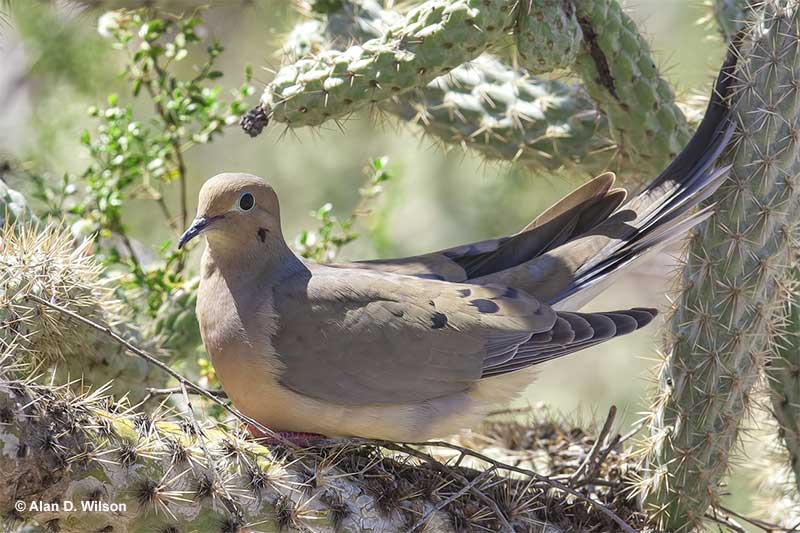
Compared to males, female Mourning Doves have a bit more laid-back plumage.
Female birds also have more olive-gray on their head than the lighter, blue-gray shown by males. They also lack the rose-pink hue that we see on males. Instead, their face, throat, and chest are olive-gray.
Vocalizations
Male Mourning Doves often sing a familiar, sad, deep cooing song. When they are looking for a mate, it is four to five notes long and sounds like, woo WOO wooo wooo wooo. After they have found a mate, they sing a shorter version of the same song.
Both sexes of this species can also make some other cooing or raspy calls.
What Do Mourning Doves Eat?
Mourning Doves feed on a wide variety of seeds and some nuts. They can eat corn, wheat, millet, buckwheat, barley, peanuts, and sunflower seeds. These doves also eat the seeds of various grasses, and many other early successional plants including composites and even Cannabis.
They especially like millet, and, if given a choice, seem to prefer agricultural crops over wild seeds. It’s hard to say why but this might be related to cultivated seeds tasting better and having less toxins than the seeds of wild plants.
The Mourning Dove forages on the ground for all of its food. One exception is when they perch on feeders to eat seeds, but even then, most Mourning Doves prefer to pick up seed that falls to the ground below the feeder.
This species won’t feed in areas with tall, dense vegetation and likes open, bare ground to sites with short grass. For this reason, we often see them on the lawns of parks, in open areas next to wetlands, and in farm fields.
They often forage in groups that quickly pick up seeds from the ground. However, instead of eating the seeds there, the birds usually store the food in their crop and fly up to a safer perch to eat.
Nesting, Eggs & Behavior
In some places, Mourning Doves breed all year long. However, in much of North America, they nest from February to October. Nesting begins with males calling and flicking their wings to attract females at possible nest sites.
After the female picks a spot, the male flies in and gives her nesting material while perching on her back. She arranges the sticks and other material around herself while using her body to form a shallow depression.
Where do they nest?
The two birds work like this, on and off, for two to four days until they construct a shallow, messy platform nest. They can build it in all sorts of trees and shrubs, or even on the ground as well as on top of old nests of doves, jays, and other bird species.
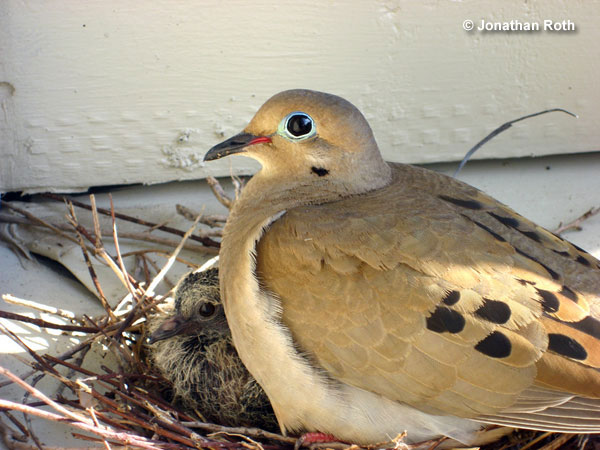
After laying her two white eggs, both parents incubate them for two weeks. After they hatch, both male and female doves also feed the nestlings. At first, they give them “crop milk” (a type of high-energy substance made by doves), but eventually feed the babies regurgitated seeds.
The nestling doves leave the nest after two weeks and continue to be fed by their father for another two weeks. At that time, the juvenile doves become independent and flock with other young doves.
Current Situation
The Mourning Dove lives in many areas of western, central, and southern Canada, and throughout the lower 48 states. They also range from Mexico to Central America. No matter where they occur, these doves are common birds in parks, open woodlands, and all sorts of other open habitats.
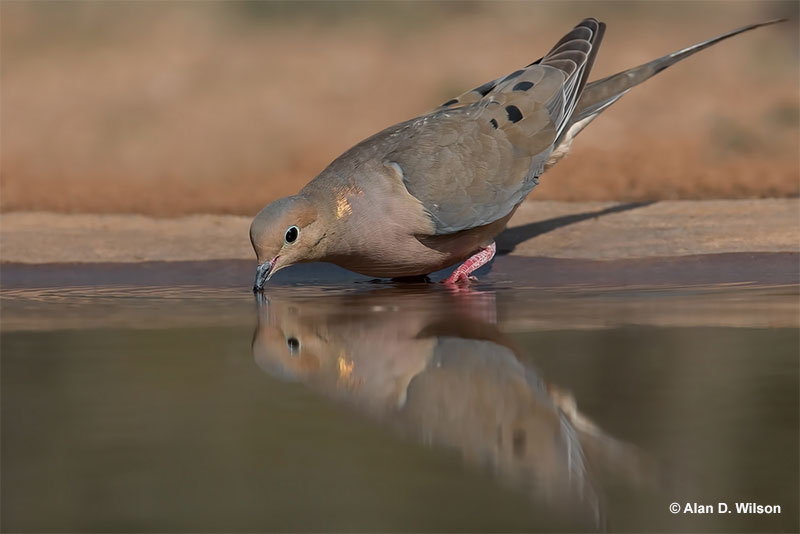
They are listed as Least Concern in the IUCN Red List and are common to abundant birds throughout their range.
Mourning Doves are some of the more common birds in North America.
Unlike many other species, Mourning Doves have benefited from forest fragmentation and other human-related factors. With that in mind, it’s no surprise their population in the USA is estimated at 130 million birds.
That’s a bit more than the entire number of people who live in the nation!
Although they are heavily hunted in some regions, this doesn’t seem to affect their numbers. Throughout their range, Mourning Doves have healthy, stable populations.
Facts
- Mourning Doves can store literally thousands of small seeds in their crop before eating them! This helps the bird avoid predators by quickly gathering food and flying to a safe place to eat instead of staying and eating its food out in the open.
- The tapered tail and long pointed wings of the Mourning Dive help it fly very fast. This bird can reach species of 55 miles per hour and maybe even faster when escaping a predator.
- This species can live to be 30 years old but normally, they have brief lives. In the wild, most Mourning Doves only live for a year or so because they are preyed on by hawks, owls, and many other animals.
- One of the adaptations that helps the Mourning Dove survive in arid habitats is its ability to drink brackish water.
- Doves have been associated with the Bible for as long as we know. Mourning Doves, however, are said to symbolize angels and even God.
- Although they feed on seeds, unlike finches and other seed-eating birds, Mourning Doves don’t have a strong beak. Instead, they digest seeds by swallowing grit and sand to help with digestion.
Similar Species
The Mourning Dove is a distinctive bird but it might be confused with a few other related species. Luckily, given a good look, all can be easily separated from the Mourning Dove.
White-winged Dove
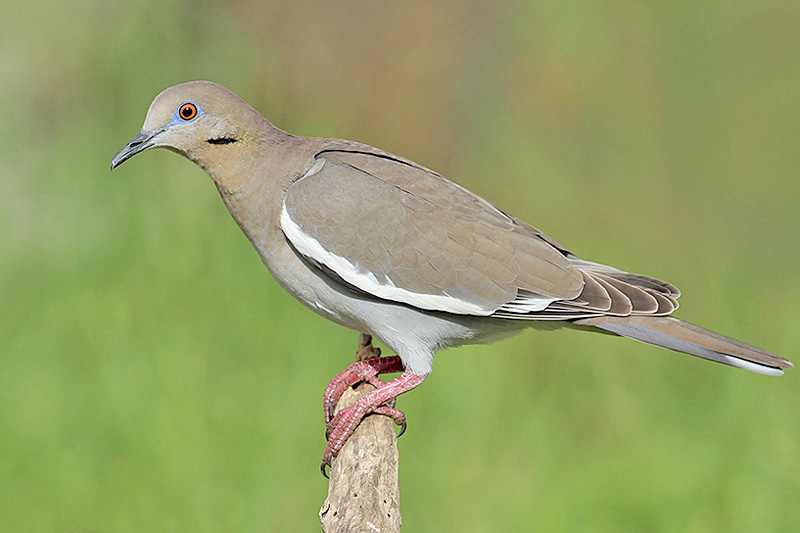
The White-winged Dove is similar in size to the Mourning Dove and has some of the same colors. However, it has a prominent white stripe in each wing, and also has a rectangular tail with a white tip. It also lacks black spots on its wings.
See more: Types of doves in the U.S.
Eurasian Collared-Dove
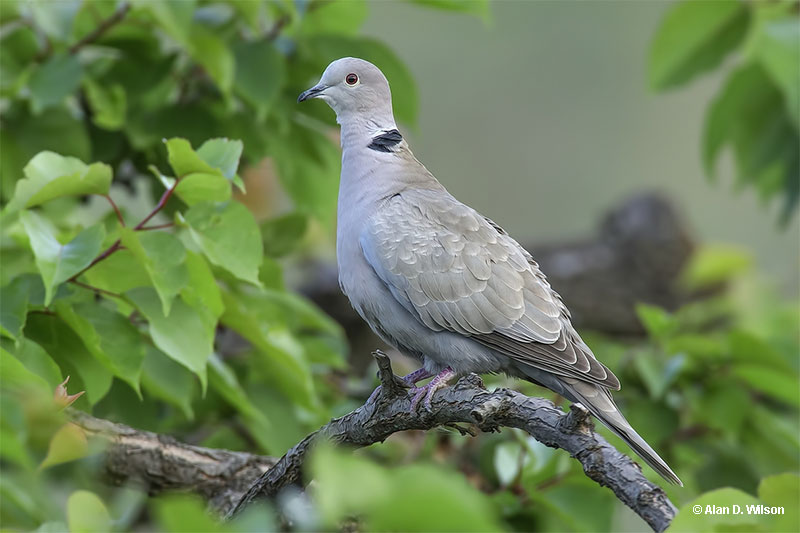
The Eurasian Collared-Dove is similar to the Mourning Dove and they can be found together but it is a little bit bigger, and is a much paler bird. It also has a lot more white in its rectangular tail. Most of all, the Eurasian Collared-Dove has a plain, pale face, and a black line on the back of its neck.
Inca Dove
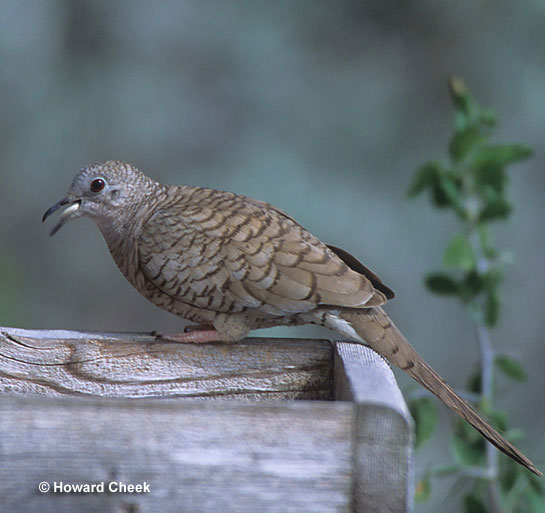
The Inca Dove is much smaller and paler than the Mourning Dove. Although it has a long tail with white outer feathers, its tail is narrow and rectangular, and not pointed. Its plumage also has a scaled pattern and it shows reddish-brown wings in flight.
Frequently Asked Questions
Why is it called the Mourning Dove?
It is called the Mourning Dove because the male makes sad, low-pitched cooing sounds. These calls are so low, they are often mistaken for an owl.
Do Mourning Doves migrate?
Research affirms that the majority of mourning doves exhibit migratory behavior. Typically, dove migration follows a north and south pattern, with limited east-west movement. A significant population of doves, nesting in the Central United States and Canada, migrates south to winter in Texas.
Are Mourning Doves good luck or bad luck?
Mourning Doves are good luck. They are considered to be a sign of love, hope, and freedom, and lend a peaceful touch to any backyard.
Are Mourning Doves just pigeons?
No, Mourning Doves are not just pigeons. Although they are in the same family as the common Rock Pigeon, Mourning Doves are a distinct, native species more closely related to other native doves in North and South America.
Do Mourning Doves feel sadness?
As with any bird, it’s hard to say if Mourning Doves feel sadness. Although their song may sound sad to us, to the Mourning Dove, their song is associated with joyful endeavors like finding a mate and nesting.

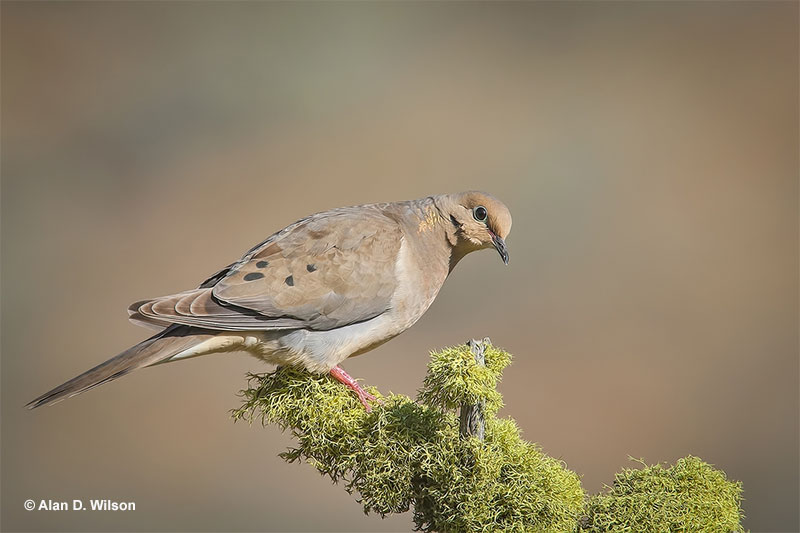

Christa
Monday 8th of April 2024
I've had various Mourning Doves nest in a hanging plant in my back patio consistantly for about 15 years now. I'm wondering how they always find the same plant. I highly doubt it's the same pair of birds this entire time. Do the babies nest in the same place they were born?
Patrick O'Donnell
Tuesday 9th of April 2024
@Crista- The babies won't necessarily use the same nesting spot as the one where they hatched. However, they and other Mourning Doves do look for certain attributes to pick a good nesting spot. For whatever reasons, it looks like your hanging plant must be an especially good place for a Mourning Dove nest!
Sue
Sunday 25th of February 2024
thank you. I observe very heavy female dove sitting alone on large rock for weeks! No male observed nearby. Mesa, Az 80 yr old hobbyist wildlife photographer
Patrick O'Donnell
Wednesday 28th of February 2024
@Sue- Nice sighting, thank you for sharing!